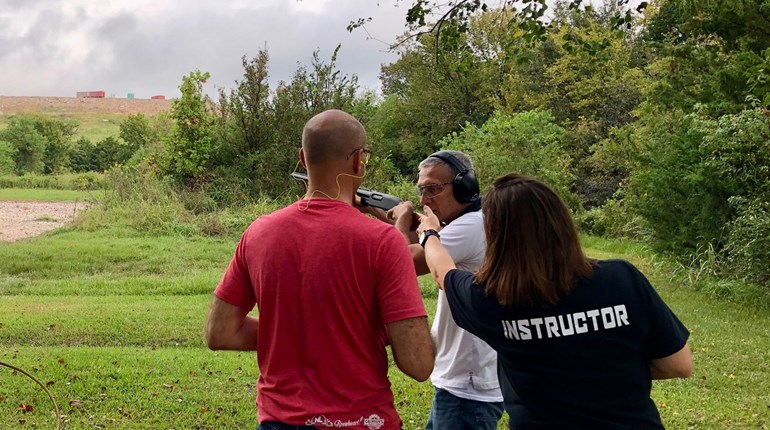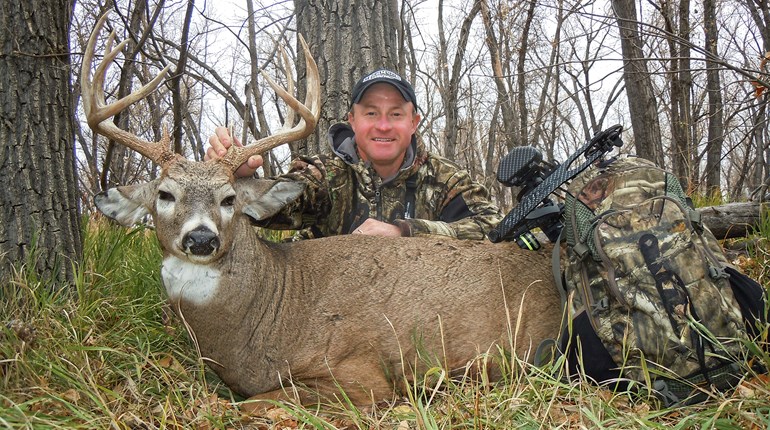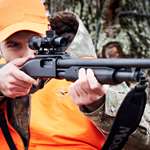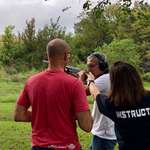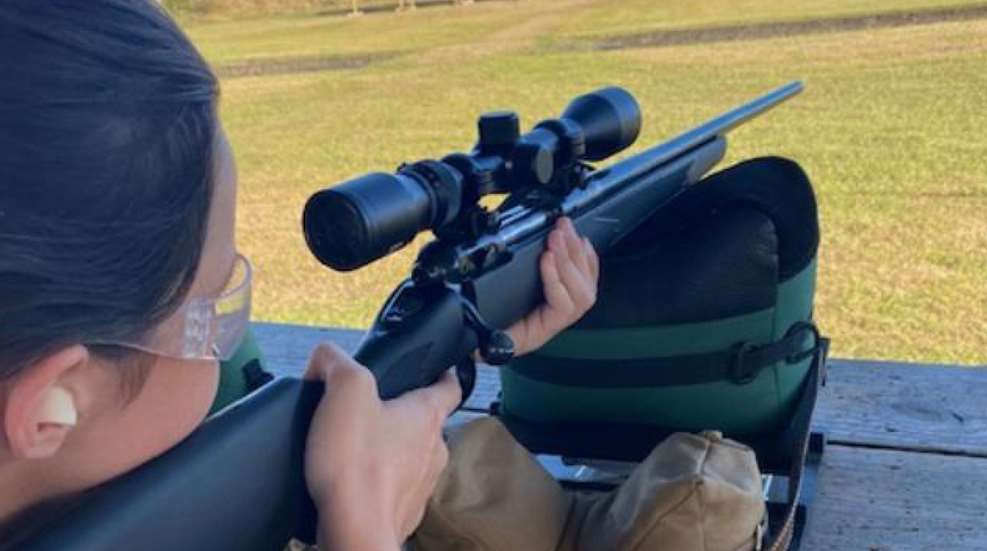
Making sure that your rifle is sighted-in is one of the most important things you can do in preparation for Opening Day of deer season. Here are five things you should do when sighting-in your rifle to increase the chances of hitting your target.
Use Your Hunting Ammunition
It is important to sight-in your rifle with the ammunition with which you plan to hunt. Knowing what the cost of ammunition is these days, it is not easy to send a round down range to punch paper when sighting in. Some premium deer hunting cartridges can cost anywhere from $4 to $6 per round. Some big game rounds can cost anywhere from $12 to $15 per round. Some penny-pinching hunters opt to shoot cheaper ammunition to sight in their rifles. This can lead to heart-breaking outcomes when the deer-, elk-, moose- or bear-of-a-lifetime comes within range.
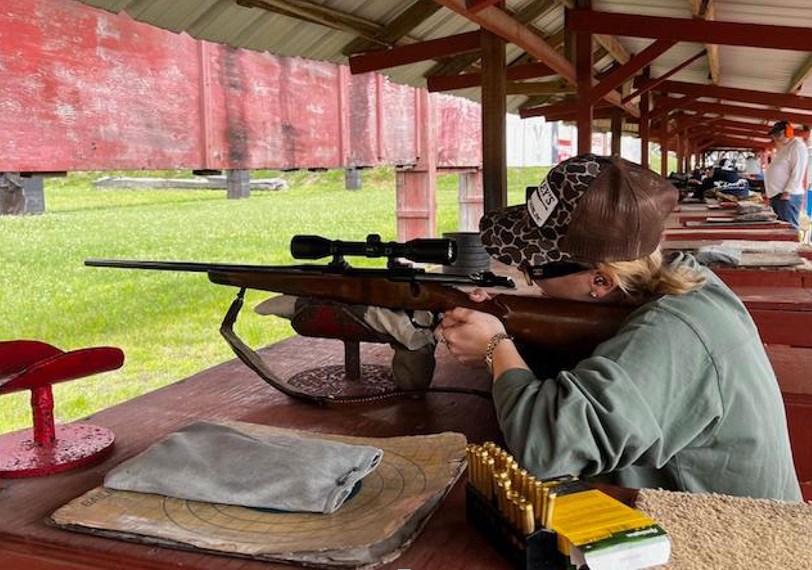
Different ammunition, even from the same manufacturer, might impart a target differently due to ballistics. Cartridges of the same caliber vary in bullet weights, design, powder measurements and velocities. There can even be differences between lots from the same cartridge, from the same manufacturer. Remember, accuracy equals consistency. It is not only following the 5 Fundamentals of Rifle Shooting (Aiming, Breath Control, Hold Control, Trigger Control, and Follow Through). Consistency also includes the same cartridge with the same ballistics.
It is a good idea to test different manufacturers, bullet weights, powder charges, and varying ballistics. Each rifle has its own preference in ammunition. This is true even between two rifles coming off the assembly line one immediately after another. It is similar to people of the same family having different food tastes. When I find the perfect ammunition for a specific rifle, I try to find five boxes from the same lot that I will use for hunting. Five boxes will last most hunters a lifetime. If you think you will shoot more than five boxes, then purchase a few more.
Let The Barrel Cool
It is nearly impossible to sight in a rifle with a hot barrel. This is a common mistake that many individuals make when sighting-in a rifle. I have seen shooters before and during deer season pump a box of cartridges through their rifle, then wonder why they cannot get a tight grouping on paper and properly sight in their firearm. In extreme cases, some frustrated shooters get so angry they have even offered others around them a bargain deal trying to sell their firearm on the spot!
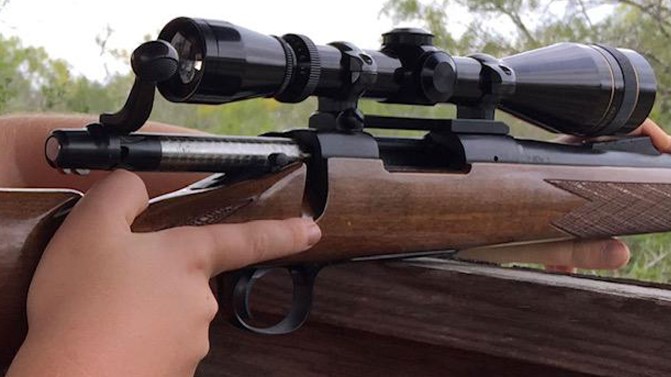
A deer rifle should not be fired more than three times before the bolt is removed and the barrel and receiver are given a chance to cool down. After the barrel feels cool to the touch, additional shots can then be made. It is important to remember that the more shots sent through the rifle, the longer it takes for the barrel to cool down between shots.
This can be a challenge in the southern parts of the United States where temperatures can remain high, even during deer season. This is where you get creative in helping the firearm cool down. In southeast Texas where it seems to be perpetually hot, I utilize battery-powered fans. After taking a couple of shots, I place the rifle in the rack, remove the bolt, and position the fan so it blows through the barrel from the receiver to the muzzle.
Use Support
When sighting-in your rifle, supports help with consistent shot placement. There are many things on the market for shooters at the range. The most common are sandbags. There are also shooting sleds, adjustable rests and shooting sticks. Using a rifle support allows for more consistent shot placements.
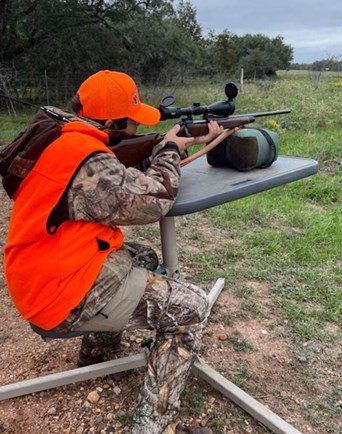 It is impossible to hold any firearm completely motionless. This is because we are living beings with a heartbeat, breathing, and muscle tremors and tension. There are also environmental factors such as wind, heat and cold that can result in shivering. Shooting supports allow the shooter to have less contact with the rifle while maintaining a solid and stable shooting platform, helping to decrease movement of the firearm.
It is impossible to hold any firearm completely motionless. This is because we are living beings with a heartbeat, breathing, and muscle tremors and tension. There are also environmental factors such as wind, heat and cold that can result in shivering. Shooting supports allow the shooter to have less contact with the rifle while maintaining a solid and stable shooting platform, helping to decrease movement of the firearm.
When using a rifle support, it is important to place the fore-end of the stock on the sandbag, rests or shooting sticks. A common mistake is resting the barrel of the gun on the support. If the barrel of the firearm is in contact with the support, accuracy will be greatly diminished as well as inconsistent shot placement. When shooting from a benchrest, shooters will oftentimes place their non-shooting hand flat on the table, avoiding contact with the firearm. With the non-shooting hand on the table, the shooter then grips the wrist of the firearm, firmly pulls the gun into the shoulder, and smoothly presses the trigger.
Shoot Early and Late
It is important to sight in your rifle at the range at the same time you expect to see deer while on your hunt. In general, deer movements can be very predictable. Deer usually move early in the morning and late in the evening. These two times of the day often have the greatest temperature fluctuations. This is especially true in the southern United States where temperatures can have a 50-degree or more swing in a 24-hour period.
Temperature can have a big influence where a shot hits a target. Hot air is less dense, or lighter, than cold air. That affects how the bullet travels through the air and where it impacts. The problem comes when you sight-in late morning to early evening, which is generally during the hours when deer are bedded down. Unfortunately, this is when most individuals sight in their rifles. This can be due to work schedules, convenience and hours of operation of the range. Ideally, hunters should sight in their rifles at dawn and dusk. These are the two time periods that are closest to what the temperatures will be when they are actually in the field.
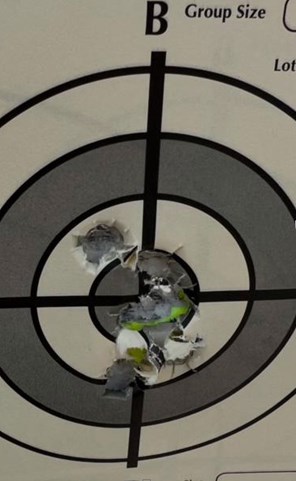
Sight-In Often
Every piece of equipment changes over time, even in rifles. Firearms are precision pieces of equipment with very tight clearances and tolerances. Over time, these parts start to wear, and tolerances change. This affects accuracy and consistency. The only way to know if your rifle is going through a “mid-life crisis” is to check it by sighting in often.
There is no set time frame for when a piece of equipment, including firearms, starts to decline in operation or efficiency. It would be easy if we could say this rifle starts to become worn at a specific number of rounds shot through it. Many things affect how firearm components start to become worn. It could be a poorly produced part, how often the firearm is cleaned, or how different makes of ammunition work in the rifle, to name a few.
Sighting-in often can let the shooter know when a rifle starts to decline in accuracy. Sometimes problems can be corrected by a qualified gunsmith before additional damage is done to the firearm. The problem may be corrected by simply changing the brand of ammunition used. What might have worked when the rifle was new, may not work as parts become worn. Changes to accuracy and consistency of a firearm can only be detected by checking the “zero,” also known as sighting-in often.
It is not only worn parts that affect the zero of a rifle. A rifle can also be knocked off zero from rough handling, dropping the firearm, bumping the scope, or having loose scope rings. Sighting-in your rifle often can easily fix these problems.
Do not be lazy when it comes to checking your equipment. Some individuals sight-in their rifles only once when it is purchased, and some only sight-in their rifles once a year. In Texas, we have a relatively long deer season, so I do a lot of hunting. As a result, I sight-in my rifle four times— before hunting season, at two different times during season, and once again before I put it away after the season is over.
We owe it to all the game we hunt to treat them as a “trophy” regardless of antler size or sex of the animal. An ethical hunter should always look for that quick, clean and ethical kill. The best way to ensure this is to have a rifle that is properly sighted-in. Take care of your equipment to prevent that deer of a lifetime from giving you the dreaded white flip and wag of the tail as it bounds away and out of view, signaling , “Sayonara, maybe next year!”












